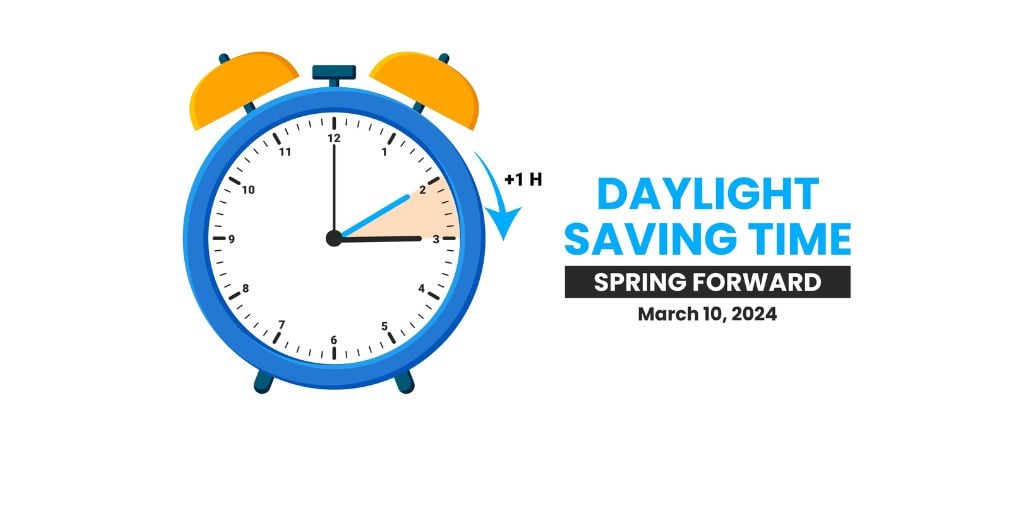Get ready: it’s time to “spring forward.”
Daylight Saving Time Starts March 10
Daylight Saving Time starts at 2 a.m. Sunday, March 10, which means you will need to turn your clocks ahead an hour before you go to bed Saturday night. The annual tradition signals the official start of longer days and, on March 12, sunrise will be at 7:42 AM and sunset will be around 7:33 PM CDT. The days will get longer from there.
Fun Daylight Saving Facts
- Daylight Saving or Daylight Savings? You will see a lot of people refer to “Daylight Savings” – that’s technically wrong. Dictionary.com said you will want to stick with Daylight Saving but you can drop the “time” part. It’s still technically abbreviated to DST.
- Daylight Saving Time is a good time to start a new tradition: Make it your yearly time to change the batteries in your smoke and carbon monoxide detectors.
- You can blame Benjamin Franklin for getting the whole Daylight Saving thing started. He wrote an essay called “An Economical Project for Diminishing the Cost of Light” suggesting people could save candles by getting up earlier and making better use of available light. Then, in 1907, Englishman William Willett championed the idea, which quickly spread. It was brought to America by Robert Garland, a businessman from Pittsburgh who first came upon the idea in the U.K.
- In 1999, the time change thwarted plans for a terrorist bombing in Israel. The West Bank was on Daylight Saving Time while Israel had just switched back to standard time. The changeover confused terrorists who had set timers on bombs. The bombs were planted but detonated an hour early, killing three terrorists.
- It wasn’t until Aug. 8, 2005 that we got our current timetable for Daylight Saving Time. President George W. Bush signed the Energy Policy Act on that day, setting the official end time for DST as the first Sunday in November. From 1986-2006, Daylight Saving Time began on the first Sunday in April and ended on the last Sunday in October. In 2007, President George Bush changed the start date to the second Sunday in March.
- Hawaii and most of Arizona do not follow DST.
- In the spring, that hour of lost sleep due to the Daylight Saving switch has been linked to an increased risk of heart attacks. On the other hand, the risk of heart attacks fell by 21 percent later in the year when an hour was added back to the clock.
- Why 2 a.m.? According to Live Science, that’s considered to be the least disruptive time of day.
- 27 percent of Americans said the twice-yearly time changes either makes them early or late for an appointment.
Photo Credit: Ardkyuu/Shutterstock.com


